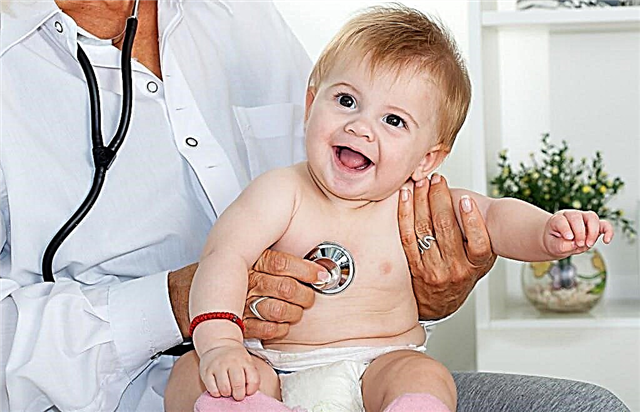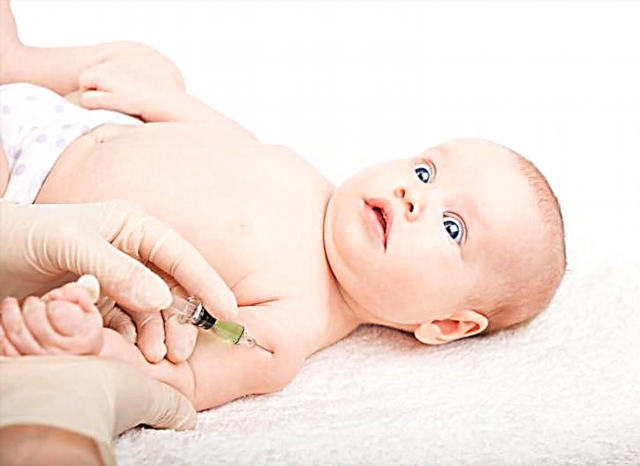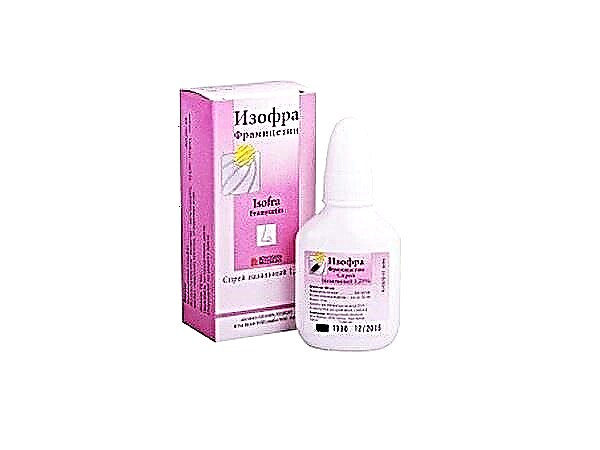If a child has any symptoms of illness, then the parents immediately start to panic. How to distinguish physiological phenomena (symptoms) that are natural for children from cases when urgent medical attention is required?
When the first child appears for young parents, everything is new: the first smile, the first laugh, the first teething, the first attempt by the baby to pick up the toy. But if the baby has any symptoms of diseases, for example, the mother noticed spots or redness on the body, or the child has a fever, or, even worse, the baby's chin began to shake, then the parents start to have a terrible panic. In some cases, this is really necessary, but more often the panic is unreasonable, and all because of ignorance of the basic subtleties of child development. How to distinguish physiological phenomena (symptoms) that are natural for children from cases when urgent medical attention is required?

Symptom number 1. A six-month-old child has a fever
Possible cause is teething
An asymptomatic rise in temperature is very frightening for parents. Outwardly healthy baby begins to fever. The main reason at this age is teething. At this time, the child can become restless, sleep poorly, be mischievous and naughty. The kid constantly pulls everything into his mouth, salivation increases. You may experience a slight runny nose, cough, and loose stools. When such symptoms appear, it is necessary to carefully examine the baby's oral cavity. When teeth erupt, the gums turn white and swell, in the area of the anterior incisors a swelling or a small tubercle appears.

We provide first aid
If the baby has a temperature above 38 ° C, give the child an age-appropriate antipyretic based on paracetamol or ibuprofen. To be sure, it is best to consult with your supervising pediatrician. Regardless of the temperature, provide first aid to the baby. Massage the swollen gums with a clean finger (you can buy a special fingertip for massaging the gums), spread with anesthetic teething gel. Chill the pacifier or teether toy in the refrigerator and give to the baby. You can also use a carrot for these purposes, let the child chew on it. If after the procedures performed the baby becomes calmer, then the appearance of the tooth fairy is very close.
When to see a doctor
See your doctor if your child has any of the following symptoms:
- The child is weak;
- The baby has fever for more than three days;
- The temperature rises to 39 ° C and above, normalizes and rises again in a day or two.
The child may be developing a viral or bacterial infection.
- A rash appeared on the baby's body;
- The child has a bad cough and a bad runny nose;
- The baby vomits and frequent loose stools appear (more than 5 times a day).
REMEMBER! If the baby is not yet three months old and the temperature has risen above 38 degrees, do not hesitate to call a doctor. At this age, the body's resistance is lower and the infection develops rapidly. Better to be on the safe side.
Symptom number 2. Vaginal discharge in a newborn girl
Possible cause is a natural sexual crisis
A girl of the first month of life may have mucous discharge from the vagina, sometimes even with blood, there is swelling of the mammary glands, and yellowish discharge from the nipples appears. Don't panic, this is normal. There is a hormonal surge transmitted from the mother. There is an imbalance of estrogen hormones in the body, which is completely safe.
We provide first aid
In this case, no help is needed, in a few days everything will go away by itself. Monitor the hygiene of the genitals, wash the baby after each bowel movement, let the body be checked without a diaper. Wash the girl correctly, from front to back, so as not to bring an infection into the vagina.
When to see a doctor
- Discharge appeared in a girl older than one and a half months;
- Duration more than 5 days. This may indicate a more serious hormonal disruption;
- The discharge has a sharp and unpleasant smell, has a purulent character and a greenish color. All this is accompanied by redness of the vagina. Most likely, the inflammatory process has begun.
Symptom number 3. Convulsions in a baby at an elevated temperature (above 38 ° C)
Possible cause is febrile seizures
A cramp is an unpleasant symptom that terrifies most moms. A sharp increase in temperature leads to the fact that the child suddenly throws his head back, arms and legs begin to twitch convulsively, the whole body tenses, the eyes roll up, sometimes there is a holding of breath, involuntary urination or feces are possible. The duration of an attack ranges from several minutes to a quarter of an hour. Seizures appear against a background of increased temperature (more than 38 ° C) in children from 6 months. up to 3 years (less often 5 years). A similar symptom occurs in 5% of children and occurs due to failures in the functioning of the central nervous system. Doctors call this phenomenon febrile seizures. As a rule, this symptom does not require treatment and will go away when the child grows up.

We provide first aid
When the first symptoms appear, the baby should be laid on its side on a hard surface. Tilt your chin down to prevent your baby from choking on saliva or vomiting. Remove nearby objects that could injure your baby. During an attack, do not give your child anything to drink or hold in your arms. When the condition returns to normal, give an antipyretic.
When to see a doctor
- For the first time, seizures occurred at the age of a child over 5 years old;
- The attack lasts more than 5 minutes;
- Convulsions occurred without fever.
- There was a short cessation of breathing;
These can all be signs of epilepsy. Call an ambulance for a doctor to see your child.
REMEMBER! After the first attack, be sure to consult a doctor for advice, he will tell you how to prevent an attack in the future. You will also need to contact a neurologist for an examination for epilepsy and prevention of this disease.
Symptom number 4. The chin and arms of the newborn are trembling
Possible cause - neonatal tremor
In infancy, the nervous system has increased excitability and small tremors of the chin and fingers and toes are considered normal. This happens, as a rule, in children of the first month, sometimes it can last up to three months. Trembling begins when the baby is in an agitated state, cries, starts to get nervous. Pediatricians call this phenomenon neonatal tremor. The main cause of trembling is problems during pregnancy or childbirth. The cause of the tremor can be intrauterine infection or lack of oxygen.

We provide first aid
No special treatment is required, the tremor will go away on its own. Take good care of your child, take more walks in the fresh air, and do relaxing massages and exercises.
When to see a doctor
- The child has reached four months of age, and the tremor does not stop;
- Not only fingers and chin tremble, but also arms, legs and head. The trembling is very strong;
- Trembling is observed in a calm state, for no apparent reason.
REMEMBER! All of the above symptoms for seeking medical attention may be prerequisites for a serious neurological disease (for example, encephalopathy) or a consequence of a lack of certain substances in the body (for example, calcium or magnesium). To clarify the diagnosis, you may have to do an ultrasound of the brain and donate blood and urine for analysis.
Symptom number 5. The vaccination site turns red and swells
Possible cause - Post-vaccination reaction
The administration of any vaccine causes the immune system to start producing antibodies that kill the infected bacteria that enter the body. If you try to figure out what vaccination is, the answer is simple. A microscopic portion of pathogenic bacteria is introduced into the child's body, and the body suffers the disease in a very mild form, sometimes completely invisible. Thus, immunity to a particular disease is developed. In most cases, reactions to the vaccine include a rash, redness, mild fever, poor stool, poor appetite, nausea, abdominal or joint pain, lethargy or irritability. This can be completely individual for each child. The most unpleasant consequences occur after DPT: the injection site turns red (the spot at the injection site can reach 8 cm in diameter), and the child complains of pain in the area of the vaccination. In medicine, the reaction to vaccinations is called a post-vaccination reaction.
We provide first aid
After vaccination, doctors do not recommend bathing the baby. If the temperature rises, an antipyretic (paracetamol or ibuprofen) should be given. If a rash occurs, treat the affected area with antihistamine ointment. And do not panic - usually the "consequences" of vaccination go away by themselves in 2-3 days.
When to see a doctor
- Fever, rash, impaired well-being is observed for more than three days.
- The child is too lethargic and weak.
- The baby's body temperature is above 39.5 degrees.
- Difficulty breathing and swallowing.
- There is visible redness and swelling of the face and neck.
REMEMBER! The most serious complication of vaccinations can be anaphylactic shock, which occurs within half an hour after the injection. Just in case, after vaccination, do not rush to go far from the clinic, take a walk somewhere nearby.
Symptom number 6. The baby's eyes run in different directions
Possible cause - Physiological strabismus
In children up to 3 - 6 months old, the eyes can be slightly crooked. The eye muscles of a newborn baby are weak, and control over them by the brain has not yet been established, as a result of which the eyeballs may move incoherently. Nothing wrong with that. The child will grow up, the eye muscles will get stronger, and the position of the pupil will return to normal. This phenomenon in pediatrics is called physiological strabismus.

We provide first aid
Periodically outweigh the toys above the bed in different directions so that the baby rotates the pupils in one direction or the other.
When to see a doctor
You should start to worry if this problem persists after six months. The doctor will prescribe appropriate treatment to correct the position of the pupil.
Symptom number 7. Swollen lymph nodes
Possible cause - Lymphadenopathy against the background of the formation of immunity
An increase in lymph nodes in children under 5 years old occurs due to the production of protective cells by the immune system - lymphocytes. Production occurs due to the body's acquaintance with new microbes. As a result, lymph nodes in the neck, under the arms, in the groin can become inflamed. In medicine, inflammation of the lymph nodes in a child under 5 years old is called lymphadenopathy, which occurs against the background of the formation of immunity.
We provide first aid
- Control the appearance of lymph nodes by probing areas of their possible formation (under the knees, above and below the collarbones, in the bends of the elbows).
- If you find an increase in lymph nodes, monitor the child's well-being.
- Do not warm the lymph nodes with warm compresses without the advice of a doctor.
When to see a doctor
- Touching the lymph node, the child feels pain. This indicates inflammation;
- The lymph node increases to the size of a pea, one centimeter or more.
REMEMBER! Swollen lymph nodes can signal health problems. You may need to take a set of tests and do an ultrasound of the abdominal organs.
P. S. It is IMPORTANT to know about this: 3 symptoms that cannot be ignored
The following symptoms require immediate medical attention:
- When you feel the back of your baby's head, you feel that the muscles are firm and tense. An incomprehensible rash appeared on the skin, accompanied by a temperature. Similar symptoms occur with meningitis - inflammation of the meninges.
- The so-called "smell of infection" appears. Urine, feces, baby's breath, sweat do not smell as usual, you smell an unpleasant foreign strong smell. It is possible that the baby has poisoning or a latent infection, metabolism may also be impaired. In any case, only the attending physician can make a diagnosis.
- After an infectious disease, accompanied by vomiting, loose stools and high fever, the baby's lips and tongue may begin to dry, and his eyes may sink. These are symptoms of dehydration. Immediately start to drink the baby with a water-salt solution like "Regidron" (Orion).
ATTENTION! Don't be afraid to see a doctor
If you are worried about your child's appearance or behavior, do not hesitate to share your concerns with your doctor. Any seemingly insignificant problem can be a harbinger of a serious illness. The sooner you identify the disease, the easier it will be to recover. The health of the child is the case when vigilance will not be superfluous. This primarily applies to children under one year old, because it is at this age that most congenital disorders are manifested, and infections develop especially rapidly.
- The most common diseases, ailments and problems of newborn children (MINI DIRECTORY)
- Your child is sick: 10 alarming symptoms for which you need to urgently see a doctor
- 5 “scary” symptoms in toddlers that aren't really dangerous
- Newborn baby - 5 questions and answers about health and care



